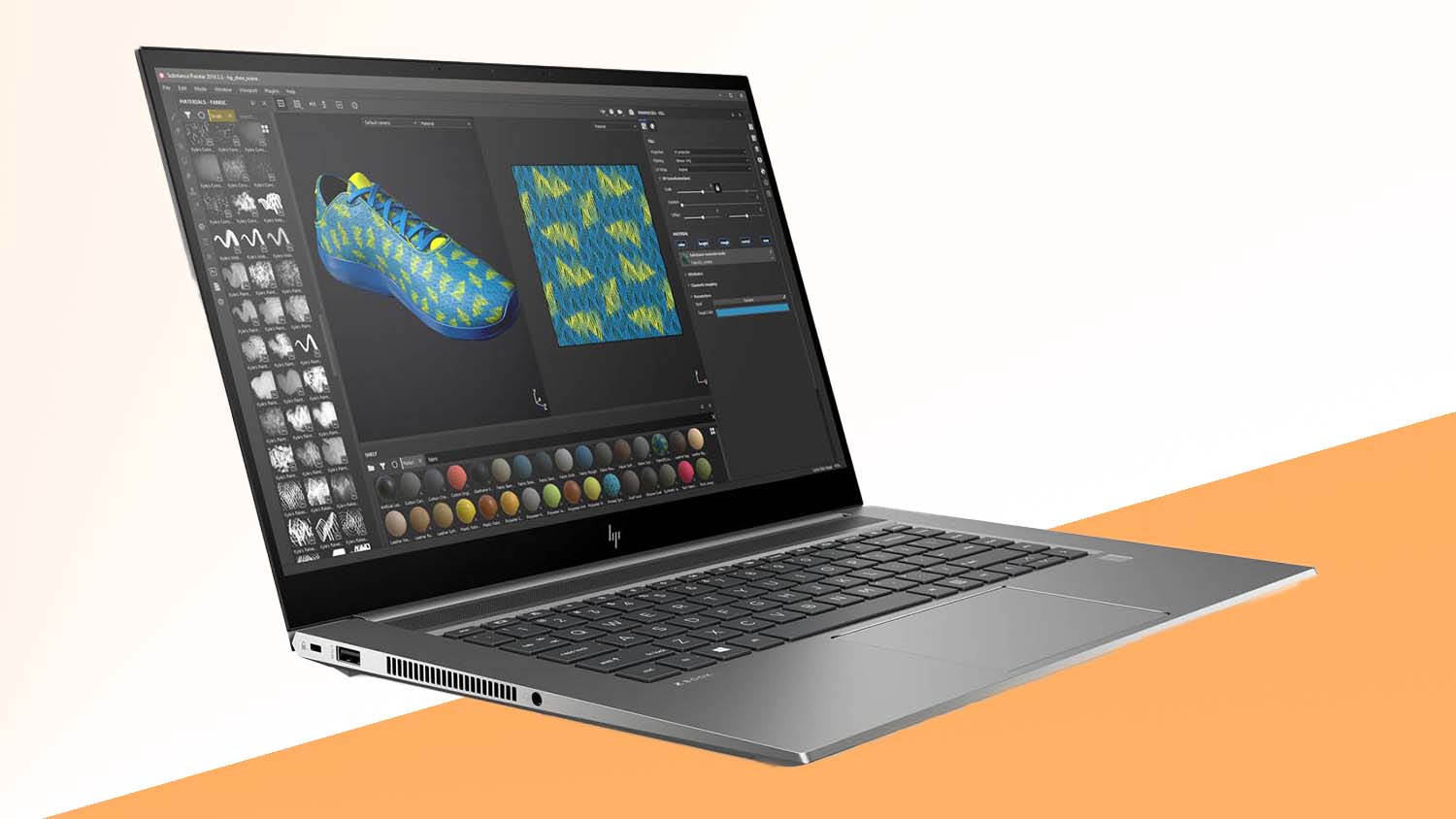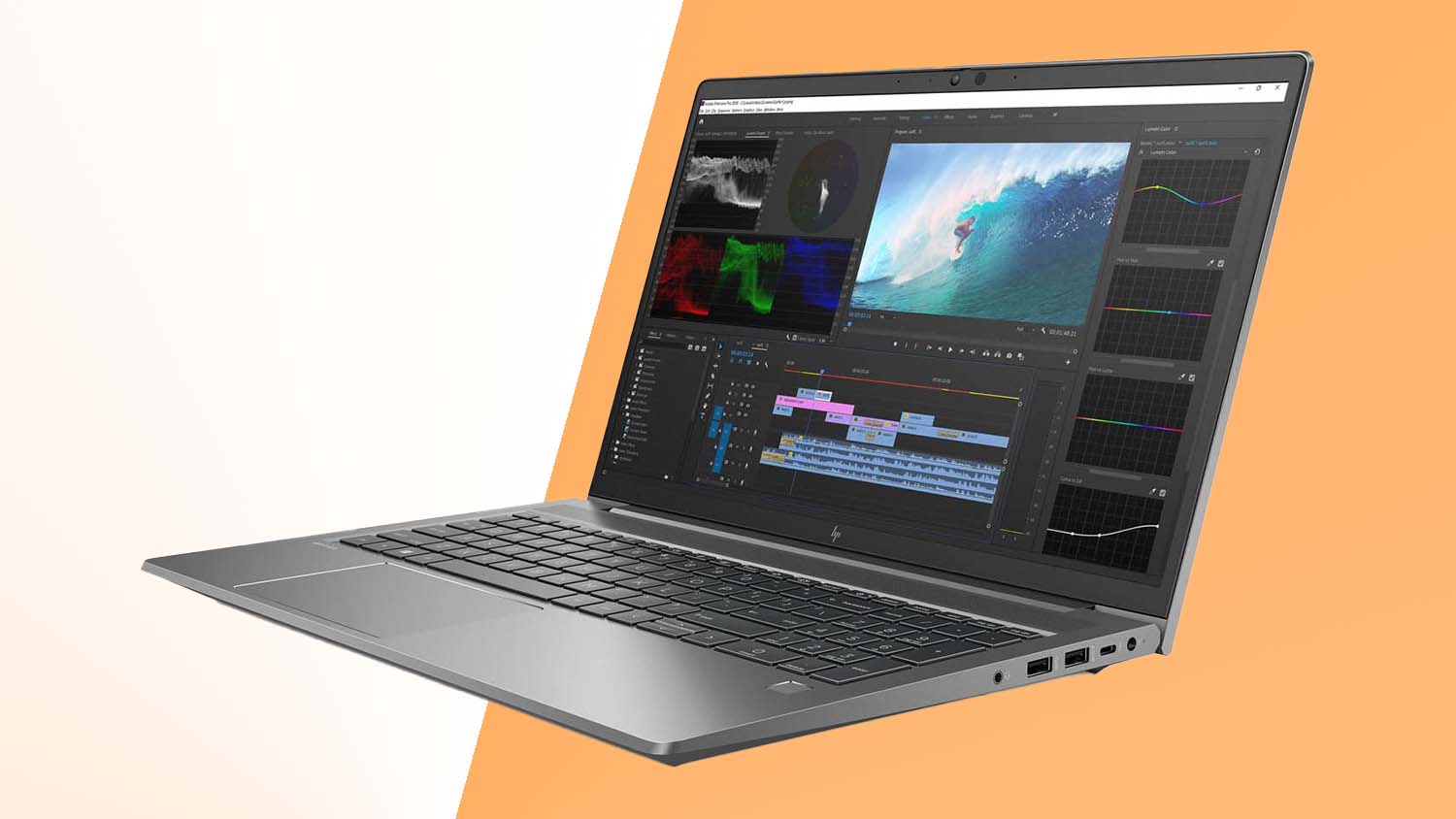HP has unveiled its HP ZBook G8 portfolio of mobile workstations, featuring 11th Gen Intel Core H-Series processors, Nvidia ‘Ampere’ RTX GPUs and (on select models) Intel Xeon W-11000M series CPUs and AMD Radeon Pro GPUs.
The new pro laptops also feature enhanced security, PCIe Gen 4 SSDs, new Dreamcolor display options and support for Thunderbolt 4, which means you can plug in dual 4k displays or a single 8k display.
The industrial design and aluminium / magnesium chassis, complete with military spec testing and durability, carry over from the HP ZBook G7 editions.
HP has also extended its focus on sustainability by utilising recycled product metals, plastics, and 100% recyclable packaging materials .
There are four new HP ZBook G8 models: the HP ZBook Power G8, HP ZBook Studio G8, HP ZBook Fury 15.6-inch G8 and HP ZBook Fury 17.3-inch G8 (pictured above). They join the HP ZBook Firefly G8, which launched earlier this year.
With a total of five machines, it appears that HP is now consolidating what was by far the largest range of mobile workstations from any single vendor, including the 2-in-1 ZBook Studio 360 and HP ZBook x2.
Security
HP has beefed up the security on the HP ZBook G8 portfolio with two new features: a Tamper Lock intrusion detection system and a new Tile device location feature to help find a lost/stolen laptop through an app, even when it’s turned off, as long as the laptop has battery power.
The Tamper Lock can give alerts or take actions if the bottom service panel is removed. It’s designed to prevent people from stealing memory or drives or trying to input malicious data into the system, says HP.
The admin can define what action to take if the bottom comes off. It could be as simple as an alert (either locally or to the admin), or the system could automatically shut down, the BIOS automatically lock, or TPM or BitLocker keys enable.
ZCentral Remote Boost
For the launch of the new HP ZBook G8 family HP is also highlighting the integration with HP ZCentral Remote Boost software, which comes free with all HP ZBooks and allows individuals to remotely connect to a dedicated HP Z workstation.
According to HP’s Brian Allen, there are several scenarios where the remote graphics software could be used in AEC.
One, an architect with an HP ZBook Studio could have other designers from around the world to remote into the laptop and collaborate on a 3D BIM model.
Two, it could be used to remotely show 3D BIM models to prospective clients, which could be particularly useful during COVID restrictions.
Third, it could allow the user to tap into more power and performance. So, an architect, for example, using an HP ZBook Studio at home, could remote into an HP Z8 desktop workstation in the office which has more powerful GPUs and multi core CPUs.
HP ZBook Studio G8

For the HP ZBook Studio G8 edition, HP has consolidated two products into one. Previously the HP ZBook Studio G7 came with a choice of Nvidia Quadro pro graphics with ISV certifications while the HP ZBook Create G7 offered Nvidia GeForce consumer graphics.
The new HP ZBook Studio G8 now offers both pro and consumer graphics options in the same machine, including the Nvidia T1200 (4GB), RTX A2000 (4GB), RTX A3000 (6GB), RTX A4000 (8GB), RTX A5000 (16GB) or GeForce RTX 3060 (6GB), 3070 (8GB) or 3080 (16GB).
The highly portable 15.6-inch mobile workstation is 17.5mm thick and starts at 1.79kg. It offers a choice of 11th Generation Intel Core H-Series processors up to the Intel Core i9-11950H (8 core, 2.6 GHz up to 5.0 GHz) and up to 32 GB RAM.
It also features an optional HP DreamColor display with a 120Hz refresh rate, a billion on-screen colours, 100% DCI-P3, and ‘end-to-end’ colour accuracy with Pantone validation.
HP ZBook Fury G8
The HP ZBook Fury comes in two sizes: a 15.6-inch model and a 17.3-inch model. It’s thicker and heavier than HP ZBook Studio G8, so offers more storage, including high-capacity HDDs, and up to 128 GB RAM. It has a similar choice of CPU and GPUs but also adds the AMD Radeon Pro W6600M into the mix. The 120Hz HP DreamColor display is also available as an option.
As the HP ZBook Fury is significantly larger than the HP ZBook Studio we expect the it will be able to get more performance out of the high-end GPUs through better cooling and increased power draw, especially when CPU and GPU are both in heavy use. But this might not be the case.
On the HP ZBook Studio, HP makes a big noise about the ‘vapour chamber’ cooling, which includes dedicated custom fans for GPU and CPU. “It gives us the capabilities of being able to have a high-performance system that’s unthrottled and still managing key and acoustics and to give you that best experience possible,” says HP’s Brian Allen.
HP ZBook Power G8
The HP ZBook Power is HP’s ‘most affordable’ mobile workstation targeted at entry-level users and students. The 15.6-inch laptop offers similar CPU options, up to 64GB of RAM and more mainstream graphics options up to the Nvidia RTX A2000. It’s 22.8 mm thick and starts at 1.89 kg.

The HP ZBook Power G8 is expected to be available in select countries in June 2021.
The HP ZBook Studio G8 and HP ZBook Fury G8 will follow in July 2021.






